Title: A two-phase model for Galaxy Formation, cosmological formation of globular clusters
Speaker: Houjun Mo (UMass)
A multi-scale model for galaxy formation
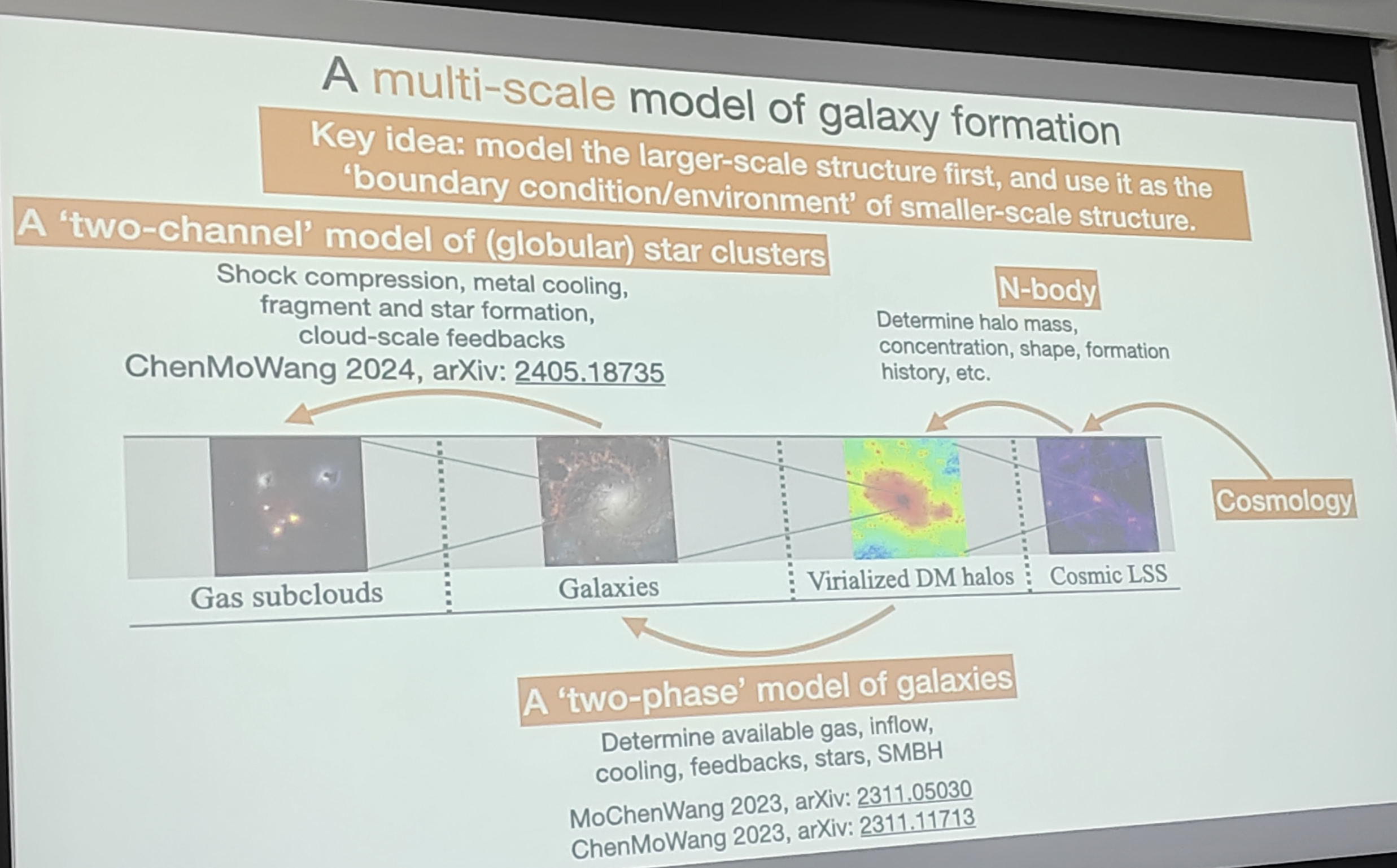
Phase-transition in the two-phase galaxy model
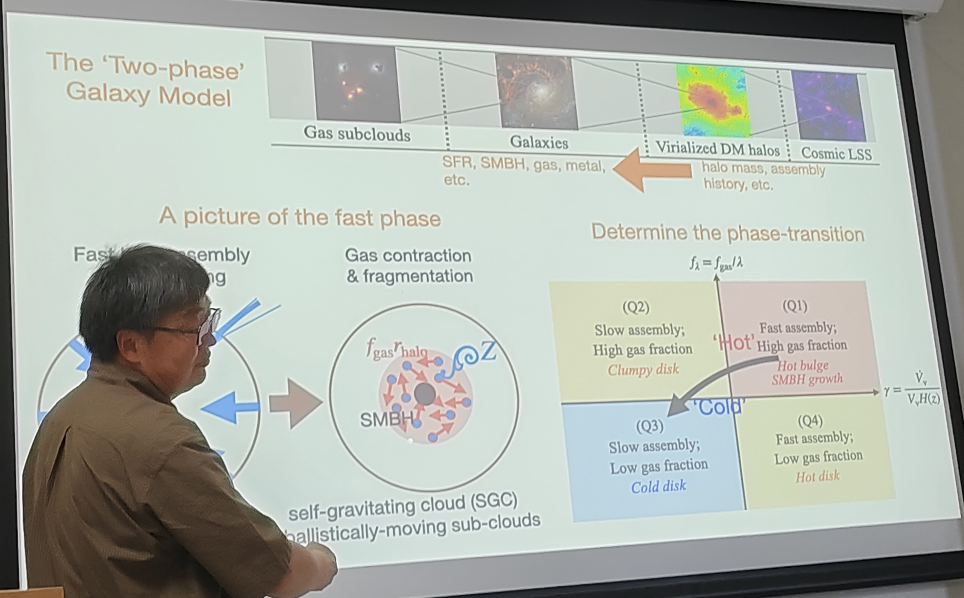
A picture of the fast phase
self-gravitating clouds (SGC) -> sub-clouds (SC) SGC: The biggest cloud (the large circle colored in red) SC: Sub-clouds in SGC, small clumps in SGC (the small circles colored in blue)
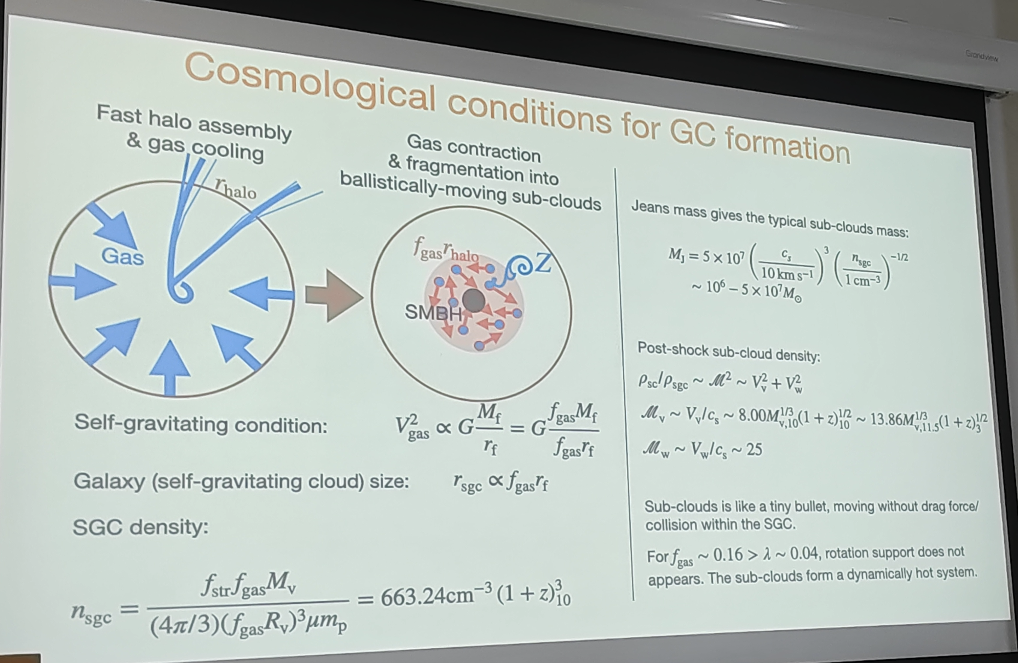
The two channels for GC formation
Above the black solid line of the corresponding metallicity, the gas can form stars.
Above the green horizontal line, the gas can form stars in a short time, and hence no supernova event can happen. It will lead to the formation of globular clusters. If the gas forms stars for a longer time, it will be dispersed by supernovae.
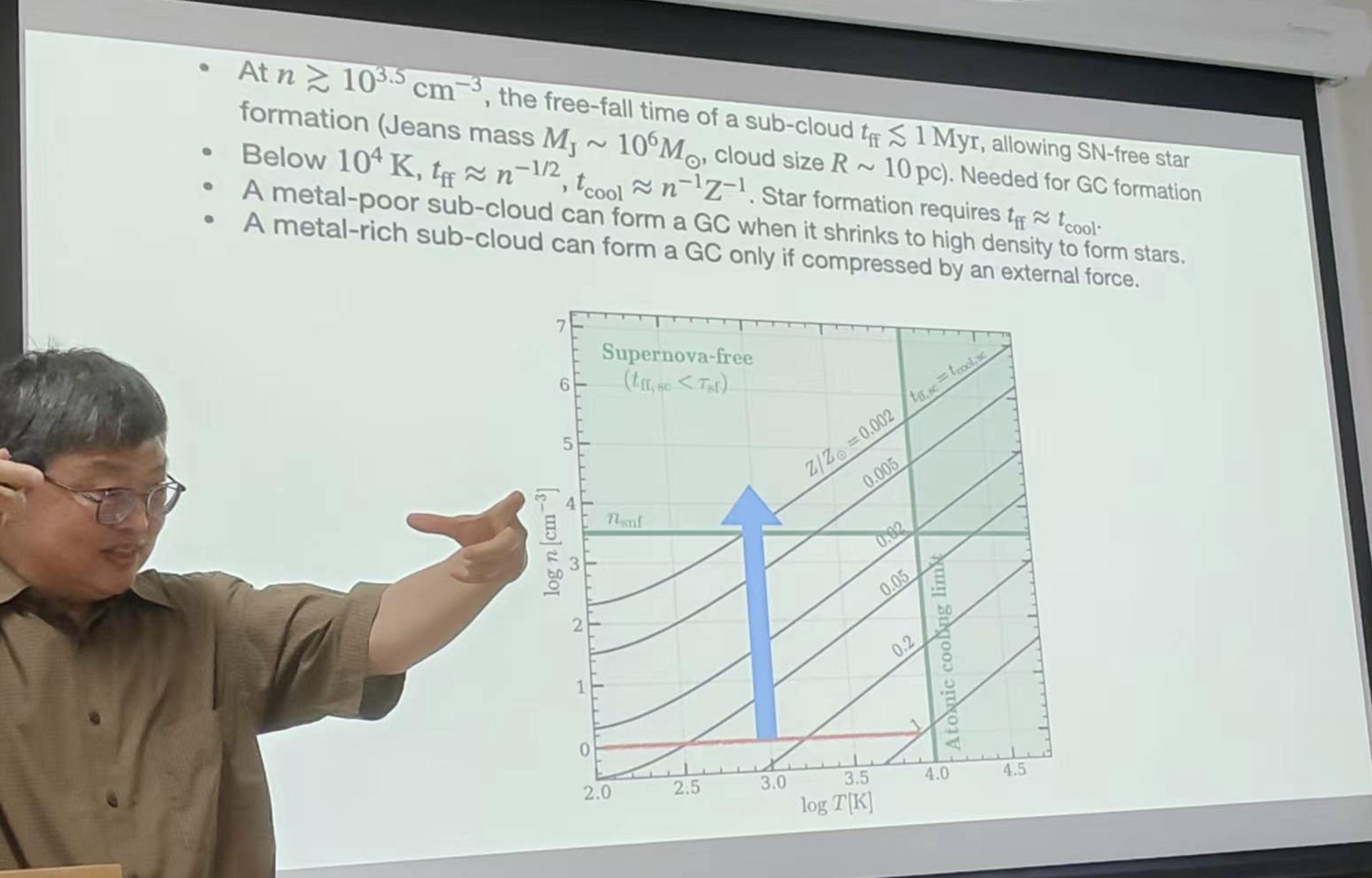
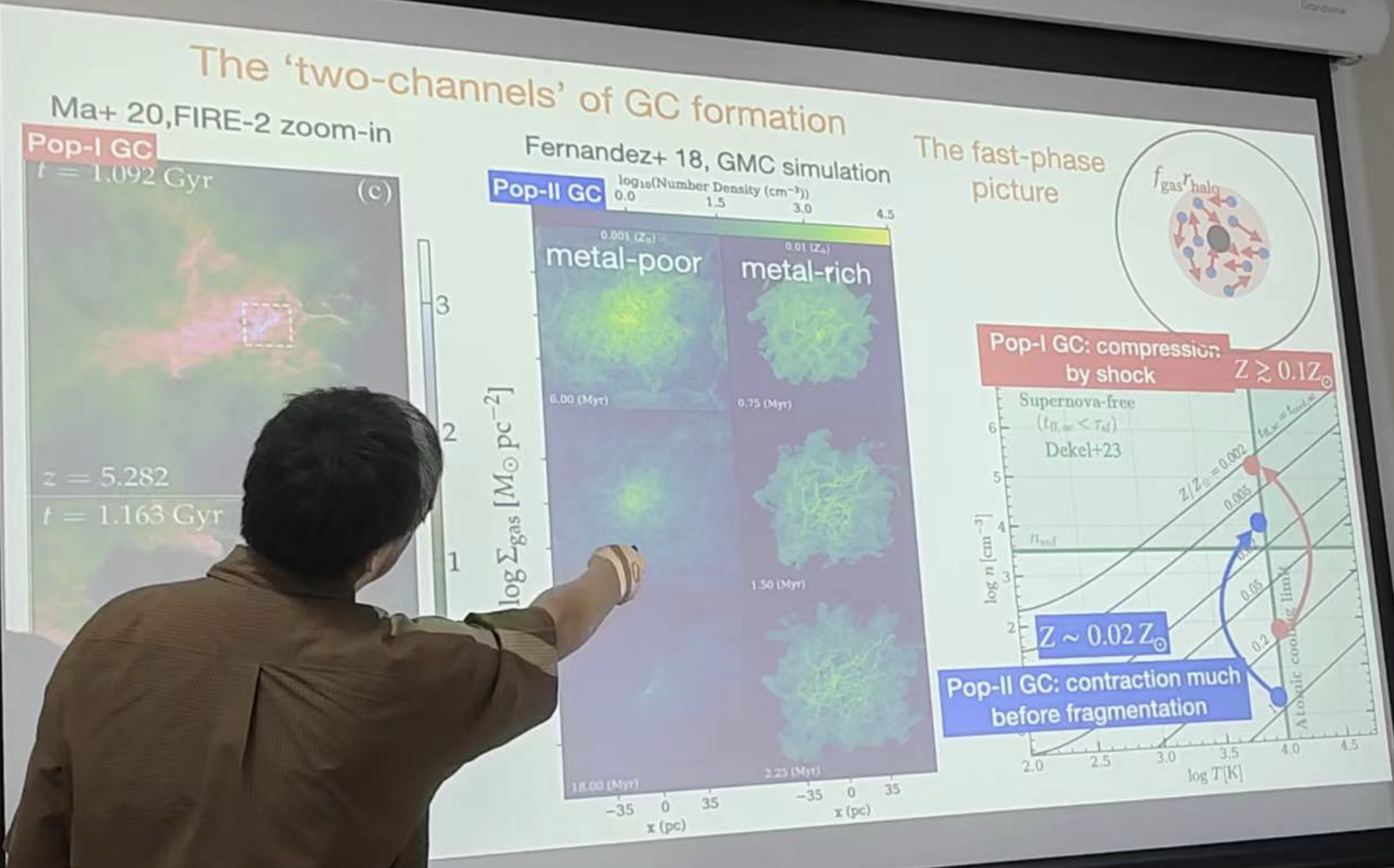
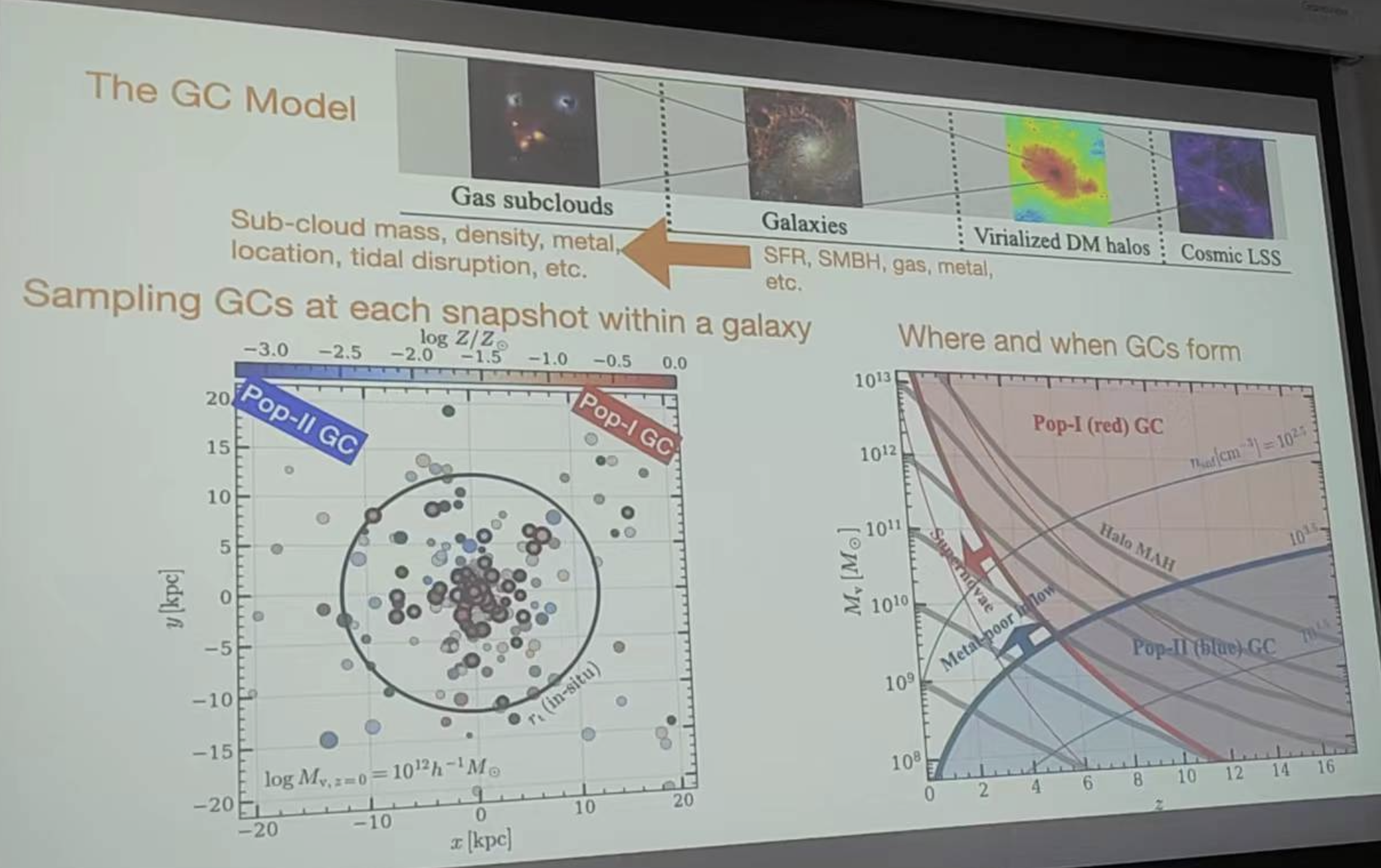
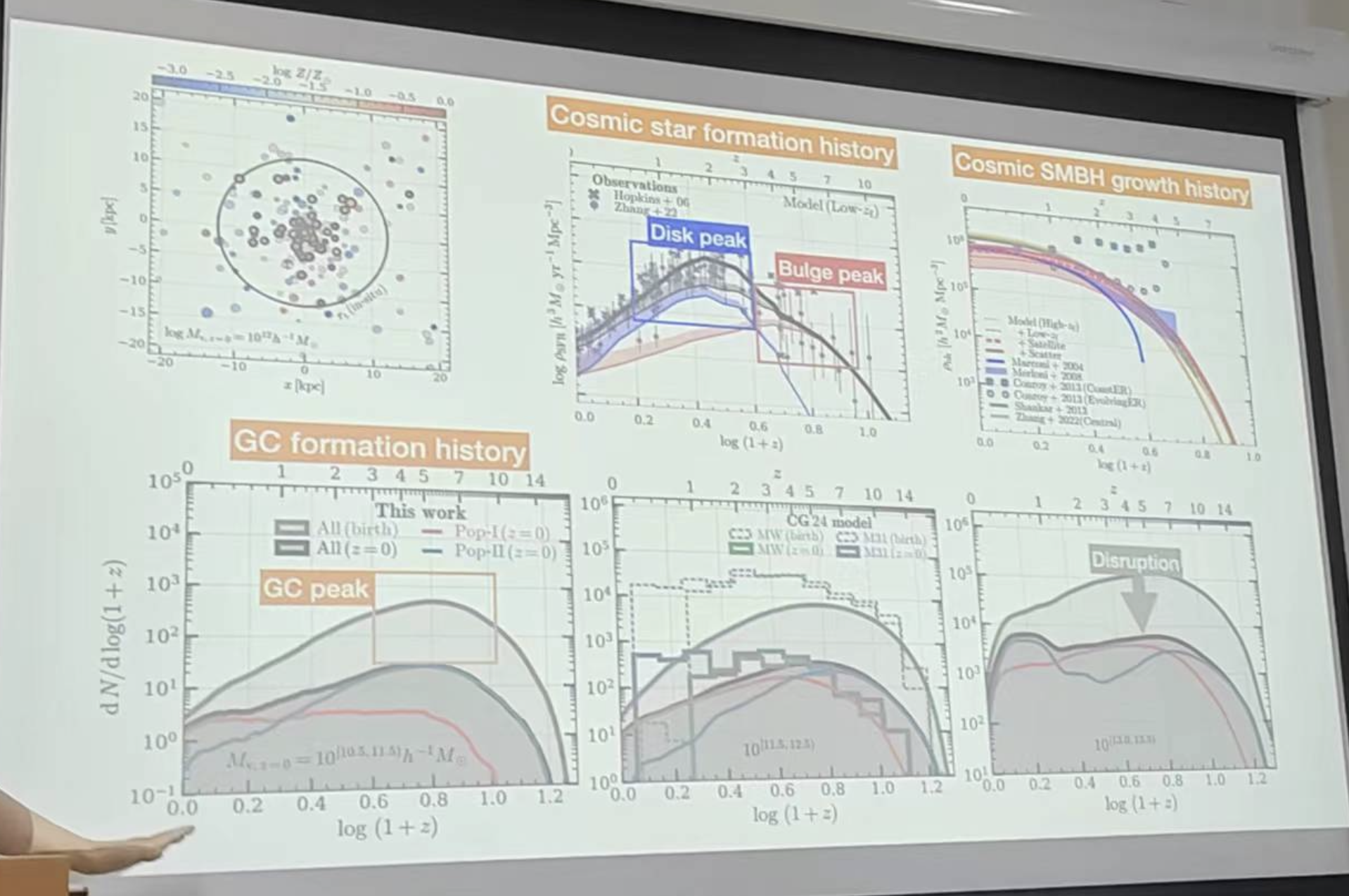
The physical origin of the
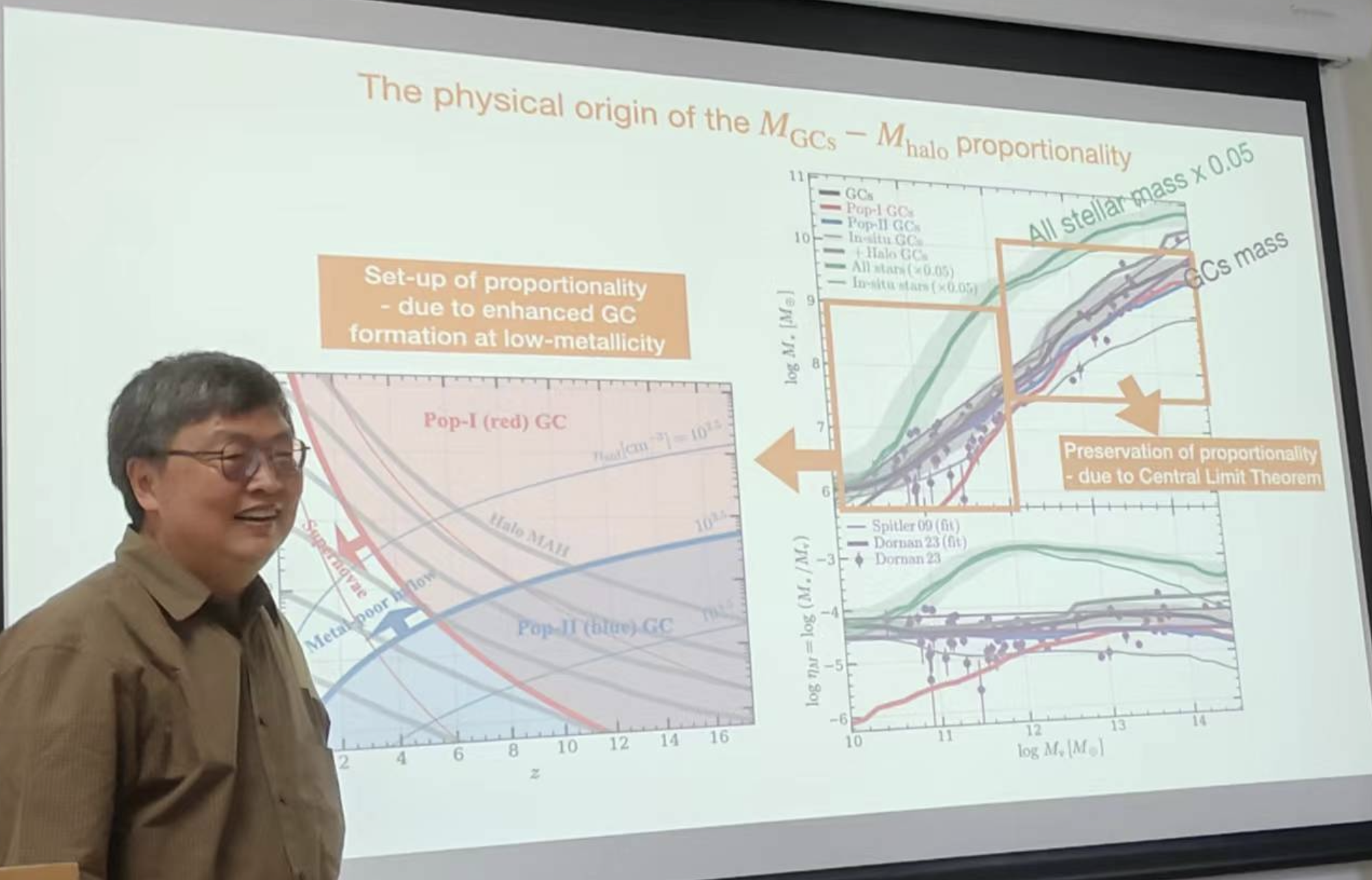
GCs are formed by nature and, thus are linearly related to the mass of the dark matter halo. The stellar mass-halo mass relation is curved due to feedback.
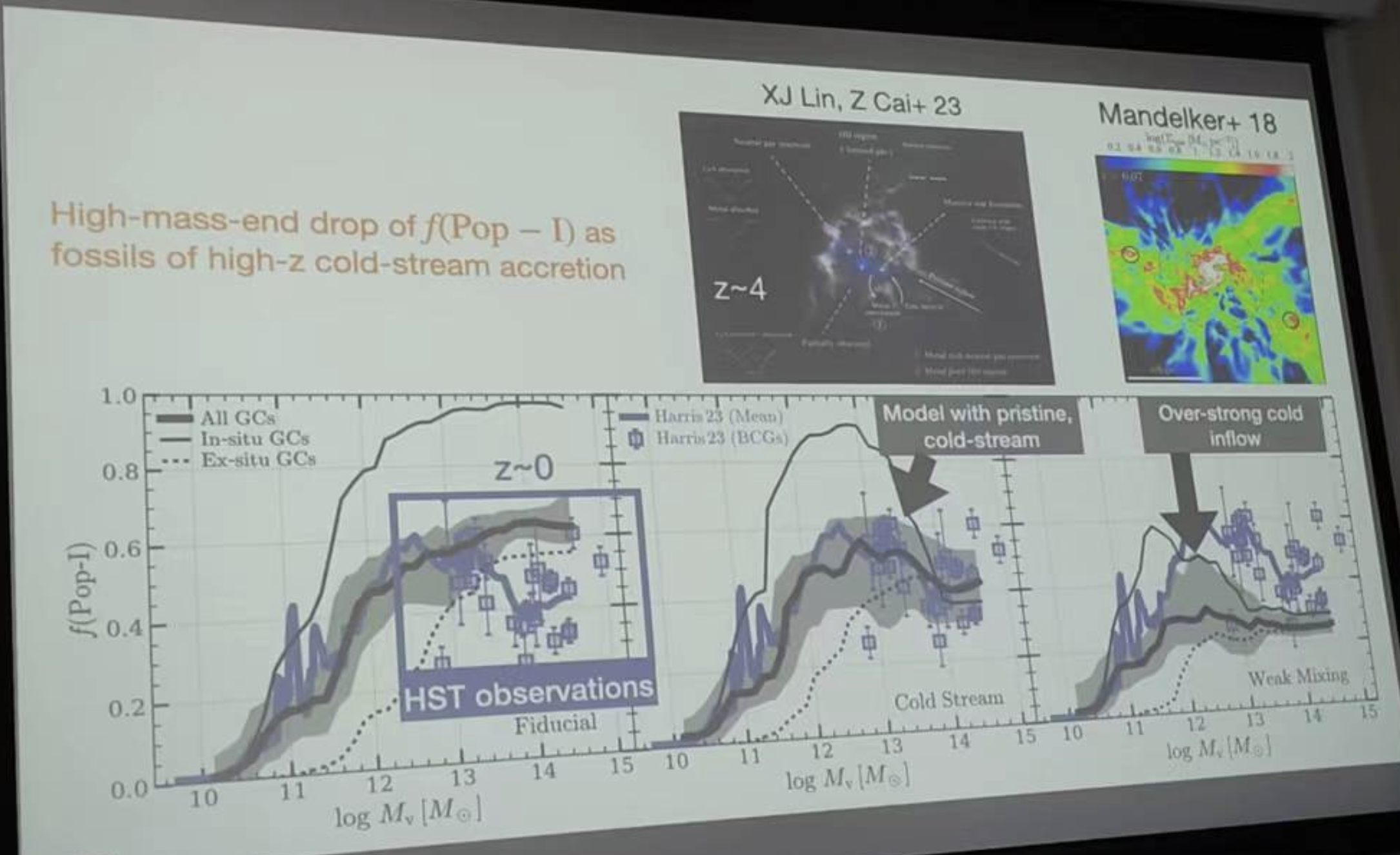

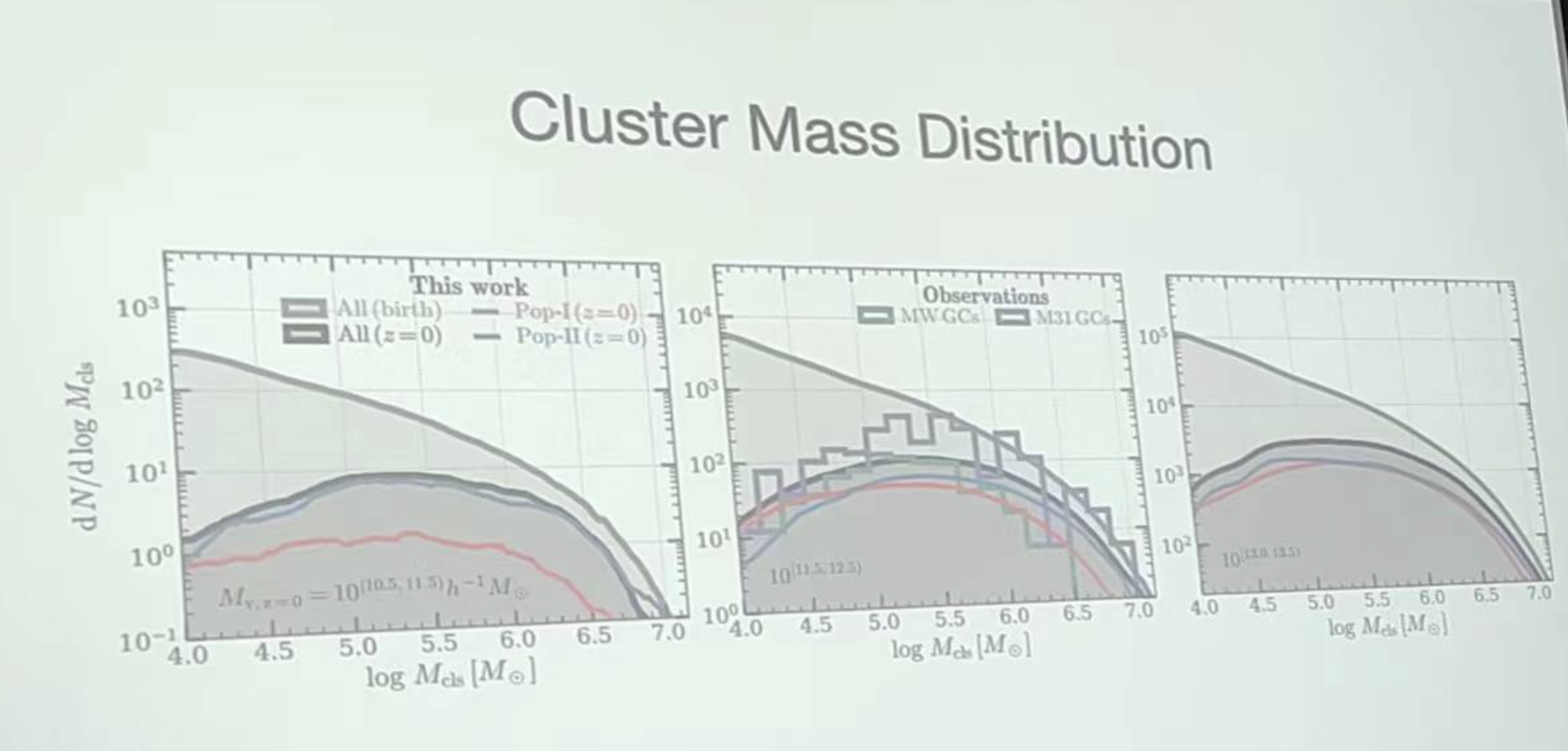
The metallicity of stars in GCs in much lower than that of all stasrs
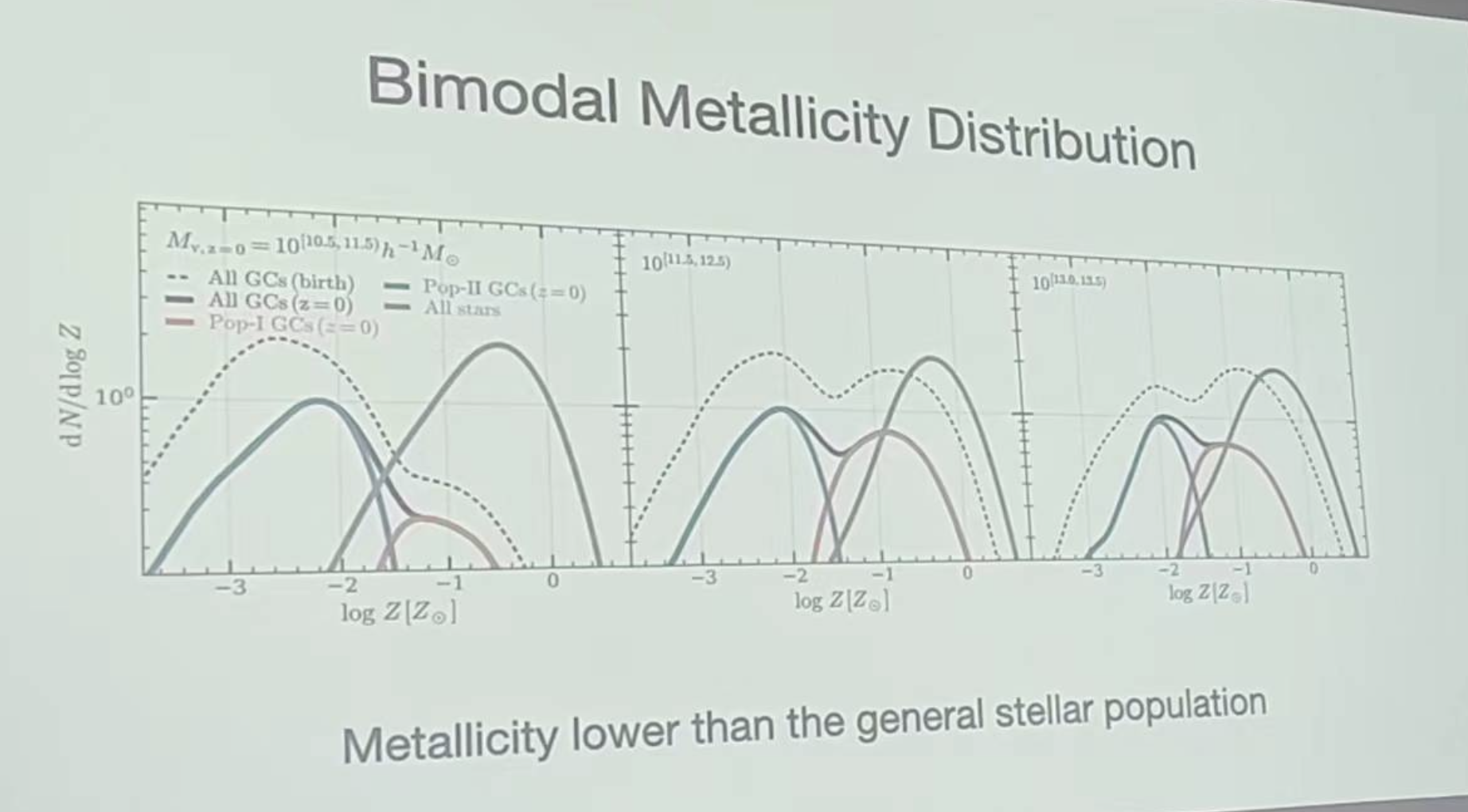
Testing top-heavy IMF
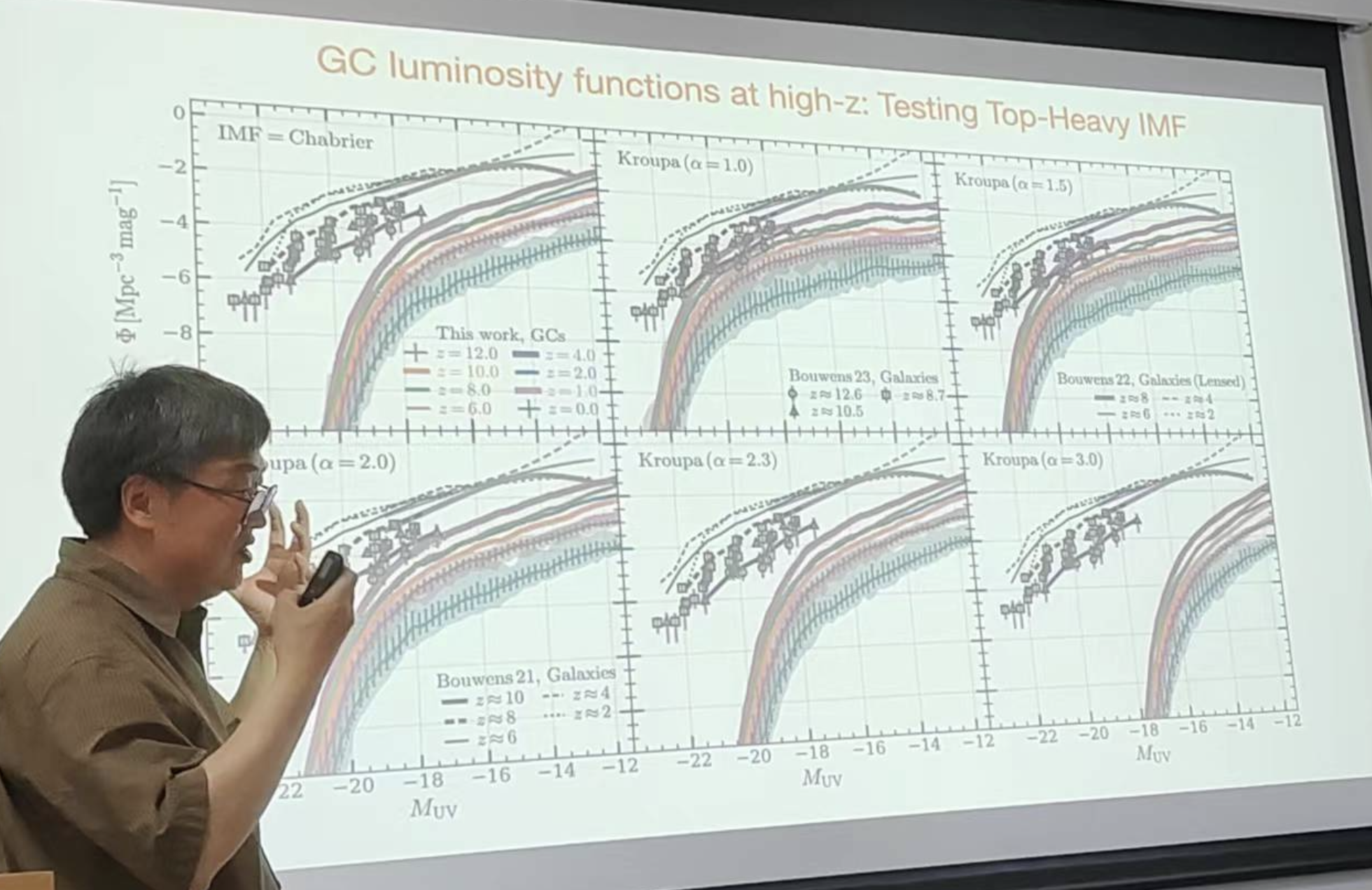
Summary
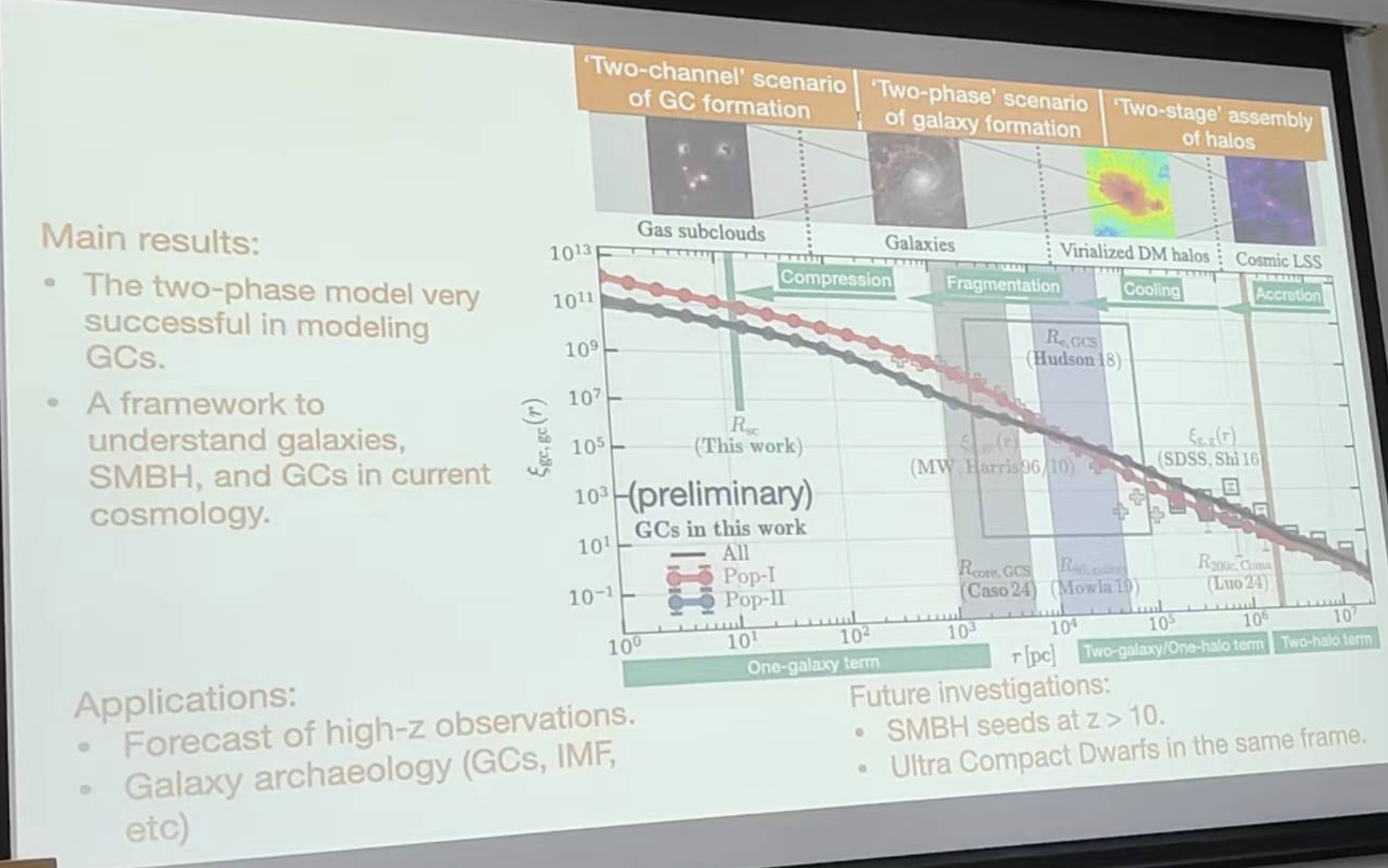
Physical processes
- Radiative cooling
- Gravitational collapse
- Dispersion by supernova
.